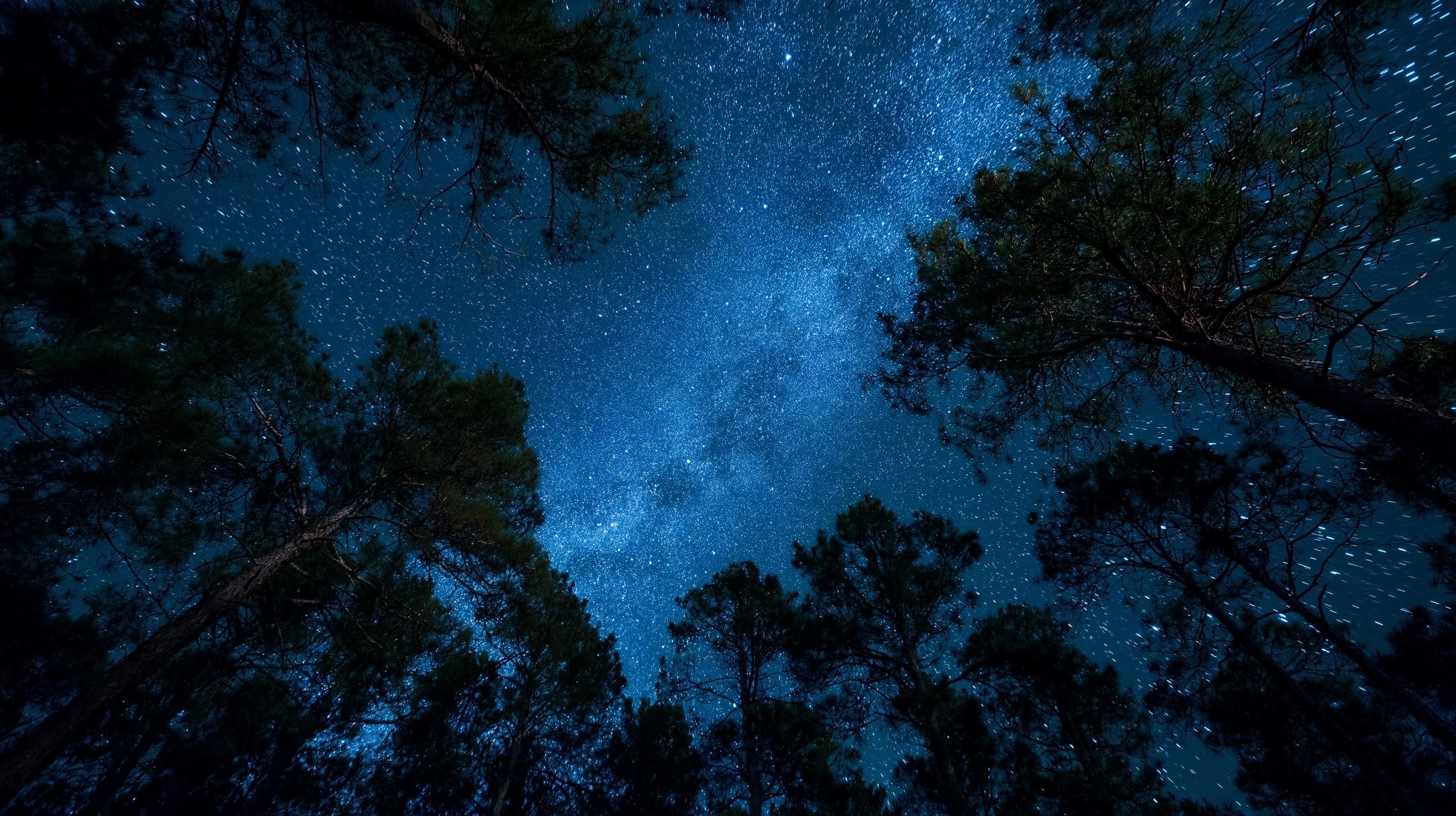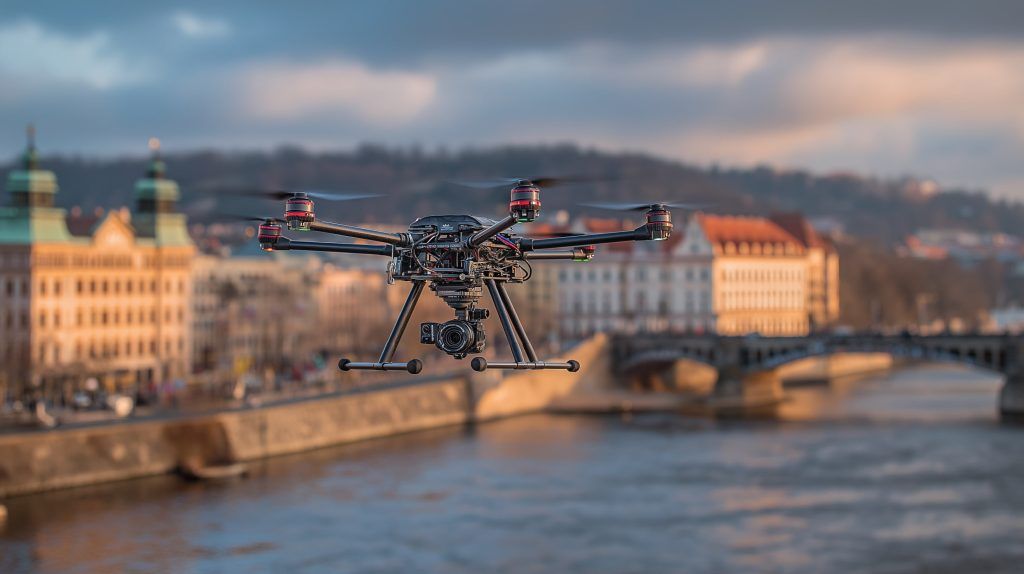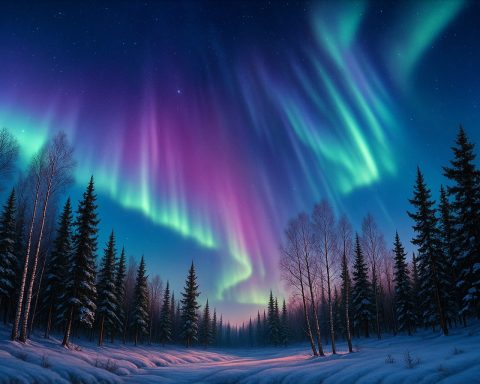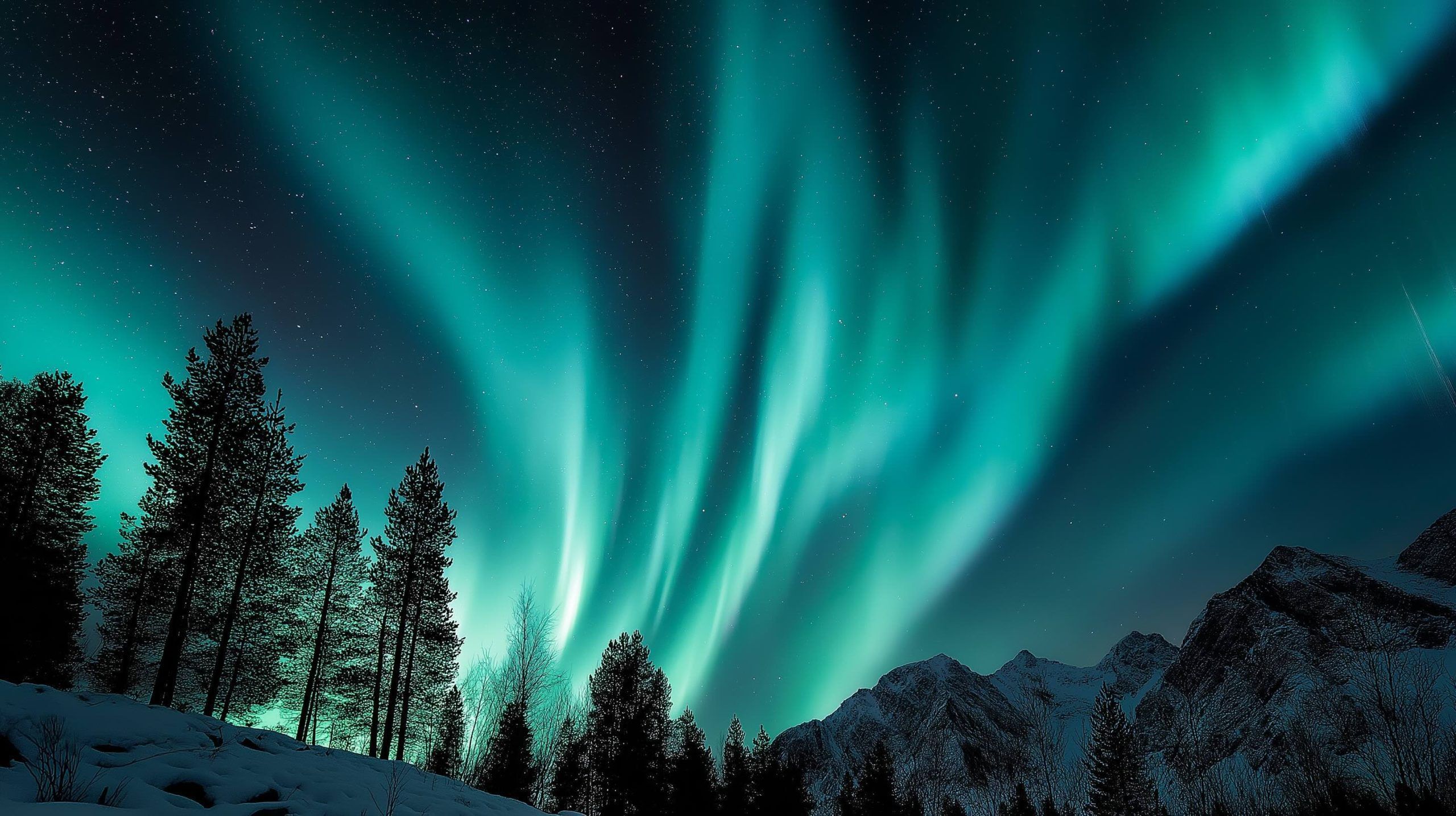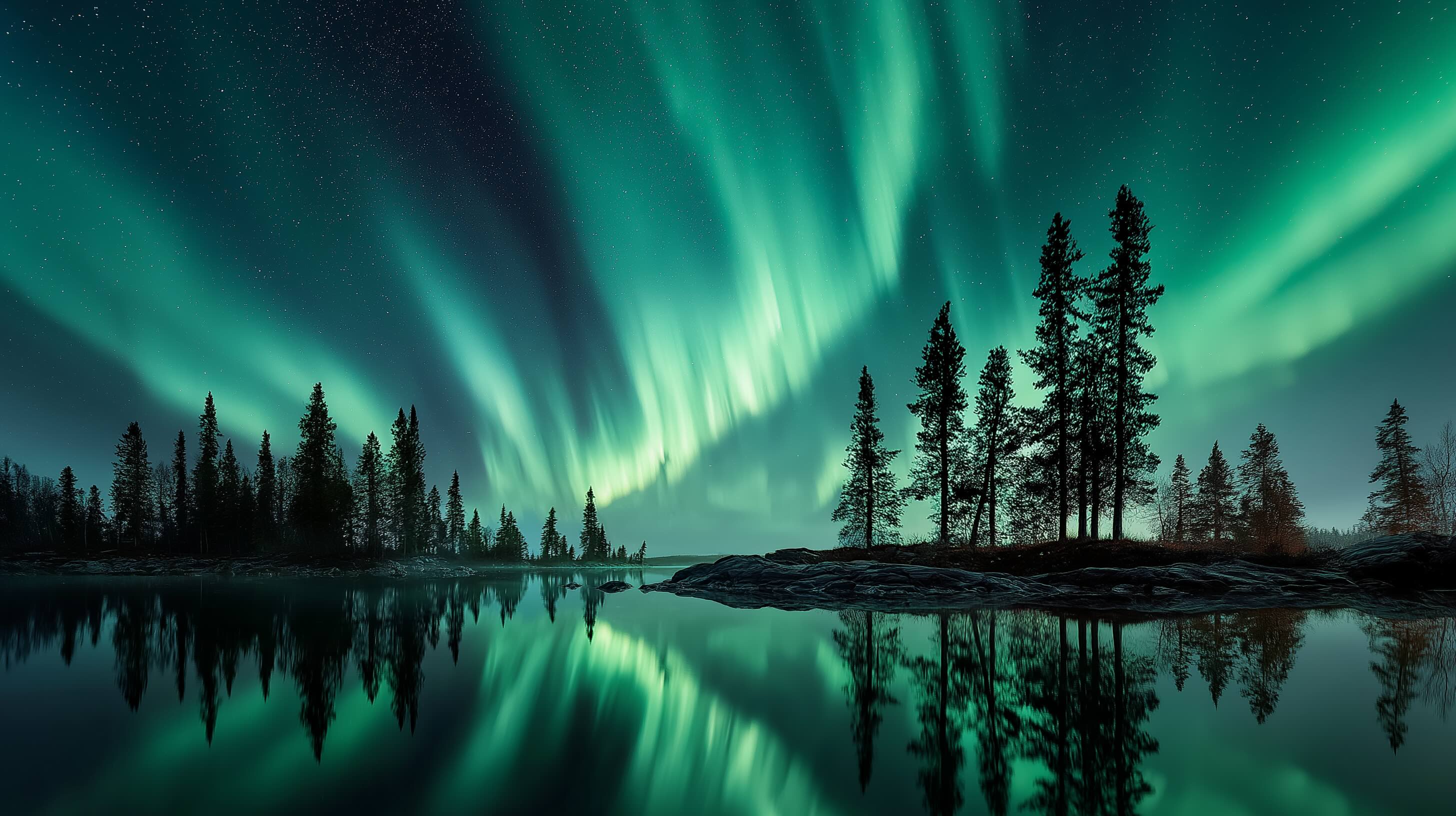- The Perseid meteor shower ramps up on August 6–7, 2025, with about 10–20 meteors per hour after local midnight under dark skies despite a bright Moon at roughly 95–99% full.
- The August full Moon on August 9, 2025 is called the Sturgeon Moon, and its brightness washes out faint meteors during early Perseid activity.
- The Eta Eridanids are expected to peak on the night of August 7–8, 2025, adding about 3 meteors per hour at best.
- Venus and Jupiter dominate the dawn sky on August 6–7, 2025, with Venus at magnitude −4.0 and Jupiter at −1.9, about 6° apart.
- Around August 11–12, 2025 Venus and Jupiter will reach an ultra-close conjunction of about 1° apart.
- Mars is visible after sunset on August 6–7, 2025 at magnitude around +1.6, low in the western sky.
- Mercury will not be visible on August 6–7, 2025 due to near superior conjunction, with a morning emergence by mid-August.
- Saturn rises around 10:30 p.m. in early August 2025 and shines near magnitude 0.8 by midnight in Pisces, with its rings tilted for viewing, and on August 6 Saturn and Neptune appear in an ultra-close conjunction.
- The International Space Station (ISS) can be seen during early August 2025, with passes around August 4–7 over parts of North America and Europe, sometimes reaching magnitude about −3.
- NOAA forecasts no G1 geomagnetic storms in the first week of August 2025, with a Kp index around 2–3, meaning auroras will likely be confined to high latitudes.
Get ready for a cosmic show on the nights of August 6–7, 2025. The sky will offer a bit of everything – from a ramping-up meteor shower to a dazzling pair of planets at dawn, all under the glow of an almost-full Sturgeon Moon. There’s even talk of potential auroras at high latitudes, plus the International Space Station (ISS) and other satellites making appearances overhead. Experts at NASA and NOAA are weighing in: NASA calls the Perseids “the best meteor shower of the year” [1], while space weather forecasters note we’re near the Sun’s active peak (meaning aurora alerts are always possible). Here’s your complete guide to all the skywatching highlights on these dates – what to see, when and where to look, and why they’re special.
Perseid Meteor Shower Ramps Up (Despite Moonlight)
August is famous for the Perseid meteor shower, one of the most anticipated sky events each summer. The Perseids are known for “bright blue meteors — and lots of them,” as University of Warwick astronomer Don Pollacco describes [2]. Under ideal dark skies at peak, the Perseids can produce up to ~100 shooting stars per hour, making them “perhaps the most beloved meteor shower for the Northern Hemisphere” [3]. NASA even touts the Perseids’ plentiful, fast streaks as “the best meteor shower of the year” [4].
2025, however, brings challenges for Perseid-watchers. A bright Moon will interfere during the shower’s peak. The full “Sturgeon Moon” on August 9 means the peak nights (Aug 11–13) will have 84–90% of lunar illumination “brightening the sky and washing out the dimmer meteors,” experts warn [5] [6]. The American Meteor Society cautions the full moon will “severely compromise” Perseid counts at maximum, leaving only the very brightest fireballs visible [7]. In other words, many faint meteors will be drowned in moonlight. The good news? The Perseids are famous for fireballs – extra-bright meteors that can still punch through the glow. “The Perseids result from bigger particles than a lot of other showers,” explains Bill Cooke of NASA’s Meteoroid Environment Office, which means more “bright fireballs” that stand out despite the moon [8] [9]. Even if 2025’s display is muted, a few spectacular Perseid fireballs could still blaze across the sky (each one a tiny fragment of Comet Swift–Tuttle burning up in Earth’s atmosphere) [10] [11].
What to expect on Aug 6–7: We’re now just a few days before the Perseids’ peak, and the shower is actively ramping up. As EarthSky notes, we’ve “now entered the Perseid meteor stream in space”, so you might spot Perseids “anytime now” on these early August nights [12]. Overall meteor activity kicks into high gear this time of year – not only from Perseids but also from random “sporadic” meteors, whose background rates roughly double compared to spring [13] [14]. If you head out after local midnight until dawn on Aug 6 or 7, you could see on the order of 10–20 meteors per hour under dark sky conditions [15]. That count is a mix of early Perseids plus other stray shooting stars. Keep in mind, the Moon will be a waxing gibbous (~95–99% full) on these nights, rising in the early evening and staying up almost until sunrise [16]. By mid-week, the Moon is essentially above the horizon all night [17], which greatly reduces the visible meteor counts. There may be a brief window of slightly darker sky just before dawn (as the Moon sets or twilight begins), but in general the Moon’s glare will wash out many faint meteors. Focus on watching for the brightest fireballs that can still shine through [18]. Even a handful of dazzling Perseids can make the late-night vigil worth it [19].
Other meteor showers are also contributing a trickle of meteors. The Southern Delta Aquariids (peaked in late July) are now tapering off; at their peak they produced ~10–20 meteors/hour [20], but by early August they add only a few faint meteors, mostly seen from the Southern Hemisphere or low northern latitudes [21]. Another minor shower, the Alpha Capricornids (peaked around July 29), is sparse in number but known for very slow, bright fireballs. You might catch an occasional Capricornid fireball in early August – distinguishable by its leisurely pace and yellowish glow compared to the faster Perseids [22]. Additionally, on the night of Aug 7–8 the Eta Eridanids meteor shower is expected to peak, coinciding with the active Perseids. It’s a minor shower (only ~3 meteors per hour at best), but it could add a few extra shooting stars in the pre-dawn hours of Aug 8 near the constellation Eridanus (low in the southeast sky) [23]. In short, summer nights are rich with meteors from multiple sources. Even before the Perseid peak, don’t be surprised if you catch a random streak of light or two – and if 2025’s Perseids are a bit underwhelming due to moonlight, take heart that next year (2026) the Perseids peak under a new moon for an ideal show [24].
Meteor Viewing Tips: To improve your meteor watching experience, keep these tips in mind:
- When and Where: Plan to watch after local midnight through dawn for the most meteors (that’s when the Perseus radiant is higher, and your side of Earth plows head-on into the meteor stream) [25]. Find the darkest sky possible, away from city lights. Rural areas or designated dark-sky parks are best. If the Moon is still up, position yourself facing away from it or use a building or trees to block its glare [26].
- Get Comfortable: You don’t need any telescopes or binoculars – in fact, those narrow your view. Meteors streak across broad areas of sky, so use your naked eyes. Bring a lawn chair or blanket to lie back and look up comfortably. Give your eyes ~30 minutes to fully adjust to the dark (and avoid looking at phones or bright lights) [27]. Patience is key – meteors come in spurts and lulls, so stick with it.
- Where to Look: Meteors can appear anywhere in the sky, though Perseids will seem to radiate from the northeast (near the constellation Perseus). Don’t stare just at the radiant – they often streak away from it. A good strategy is to watch a wide expanse of sky overhead. The Milky Way band (arching across the sky in August) is a nice region to focus on, as many meteors will cross it.
- Who Will See More: The Northern Hemisphere enjoys the best Perseid views (the radiant rises higher for northerly latitudes) [28]. Southern Hemisphere observers will see fewer Perseids (since Perseus stays lower), but you can still catch some, along with other showers’ meteors [29]. Wherever you are, clear weather and dark skies matter most.
- Be Prepared: Bring warm clothes (nights can get chilly), bug spray, and maybe a hot drink or snacks. Meteor-watching is a waiting game; make it enjoyable. And if you’re out in the wee hours, let someone know for safety. Most importantly, enjoy the moment – even one brilliant shooting star can be a thrill.
Planets on Parade (and a Brilliant Moon)
While meteors streak overhead, the planets are putting on their own show across the night. In fact, almost every major planet is visible at some point during these August nights [30]. Here’s what to look for on Aug 6–7:
- Mars (Evening Twilight): The Red Planet is barely hanging on to visibility after sunset. Mars is now far on the other side of the Sun from us and has faded to around magnitude +1.6 [31] – relatively faint. You might glimpse a tiny reddish point very low in the western sky at dusk, but it won’t jump out at you. It sets shortly after the sky gets fully dark [32]. To attempt a sighting, you’ll need an unobstructed westward view (no trees or buildings) and perhaps binoculars to scan the bright twilight. Catch it immediately after sunset if at all – Mars is like a fading ember that will soon disappear into the Sun’s glare for the coming months.
- Mercury (Hidden in Sun’s Glare): Don’t expect to spot Mercury this week – Mercury is not visible in early August. The innermost planet is near superior conjunction (on the far side of the Sun) and is completely lost in the Sun’s blinding glow [33]. Mercury will re-emerge in the morning sky by mid-August, eventually making one of its best morning appearances of the year in late August [34]. But on Aug 6–7, Mercury is a no-show – save your Mercury hunt for a few weeks later.
- Saturn (Late Night into Dawn): Saturn takes center stage once late night rolls around. The ringed planet is rising around ~10:30 p.m. local time in early August [35]. By midnight, Saturn will be shining well above the eastern horizon in the constellation Pisces, appearing as a steady golden point of light. At approximately magnitude 0.8 [36], Saturn is one of the brightest “stars” in that area of sky (outshone only by the Moon at the moment). Saturn is also nearing its opposition later this month, which means it’s particularly bright and visible all night – an excellent time to observe it [37]. Even a small telescope will reveal Saturn’s famous rings, which are currently tilted at a generous angle for viewing [38]. Fun fact: Saturn is experiencing a rare meetup of its own – an ultra-close conjunction with distant Neptune. On August 6, Saturn and Neptune appear extremely close together in the sky, reaching an exact alignment that day [39]. Neptune, at magnitude ~7.8, is far too faint to see with the naked eye [40]. But if you have a decent telescope, around Aug 6–7 you can actually catch Saturn and Neptune in the same low-power field of view [41]! Neptune will look like a tiny blue-gray “speck” near Saturn [42]. This is essentially a telescope-only event, but a very cool one: you’d be gazing upon two planets nearly 2.7 billion miles apart appearing side-by-side. Even without a scope, you can enjoy Saturn gleaming steadily all night (outshining most nearby stars). And if you do have a scope, also try to spot Titan, Saturn’s largest moon, visible as a faint point nearby. (Trivia: A special transit of Titan’s shadow across Saturn occurred on Aug 2–3, but even on a regular night, Saturn’s moons are fun to observe for telescope users [43].)
- Venus & Jupiter (Brilliant Dawn Duo): Perhaps the biggest “wow” moment comes before sunrise, where the two brightest planets – Venus and Jupiter – are putting on a dazzling dual display. Step outside about 60–90 minutes before your local sunrise and look toward the east-northeastern horizon [44]. You’ll easily spot brilliant Venus (the famed “Morning Star”) blazing at about magnitude –4.0, low in the sky. Just above it will be bright Jupiter (around mag –1.9) – dimmer than Venus but still the second-brightest point in the pre-dawn sky [45]. On Aug 6–7, Venus and Jupiter are only about 6° apart (roughly the width of your palm at arm’s length) – a striking “double beacon” in the twilight darkness [46] [47]. They almost resemble a pair of cosmic car headlights low on the horizon. Each morning, the two planets creep a bit closer together. NASA notes the pair will “appear to graze each other” around mid-August, reaching an ultra-close conjunction on Aug 11–12 when they’ll be just ~1° apart [48] [49]. (At that separation, you could hide both planets behind your outstretched pinky finger!) This Venus–Jupiter meetup is one of the highlight celestial events of the month. It’s so eye-catching that some skywatchers joke such a tight pairing might even fool casual observers into reporting “twin UFOs” hovering at dawn [50]. Don’t miss this spectacle if you’re an early riser (or are willing to become one for a morning)! It’s visible worldwide – anywhere you have a clear sky and an unobstructed view of the eastern horizon before sunrise [51]. The main challenge is their low altitude – they’re very low to the horizon, so find a spot with a flat, clear view to the east (no tall buildings or trees blocking your sightline) [52]. Start looking around 4:00–5:00 a.m. local time (exact timing depends on your location and sunrise) while the sky is still fairly dark [53]. Venus will pop into view first – it’s incredibly bright – and Jupiter will be nearby, slightly higher and to one side. No telescope is needed; these planets shine plainly to the naked eye (though binoculars can help you pick them out earlier in the twilight). This conjunction is special – Venus and Jupiter won’t be this close and conveniently placed for viewing again for several years [54]. Enjoy their cosmic “pas de deux” now, and mark your calendar for Aug 11–12 when they reach their absolute closest approach!
- The Moon: Don’t forget the Moon – it’s a prominent (and brilliant) player in this week’s sky. On Aug 6–7 the Moon is a waxing gibbous, swelling from about ~95% to 99% illuminated as it marches toward full on August 9 [55]. This August full Moon is traditionally called the “Sturgeon Moon” [56]. Each evening, you’ll see the bright Moon rise in the late afternoon or early evening, and it stays up all night long (setting around sunrise). Its bright glow will overwhelm many faint stars and will unfortunately make meteor or aurora spotting much trickier [57]. However, the Moon itself is a beautiful sight. Take a moment to enjoy its silvery light, or even point binoculars at it – you’ll be able to trace the stark light/dark boundary (the terminator) across the lunar surface and see craters and “seas” (maria) in sharp relief [58]. In early August the Moon is gliding through the constellations Scorpius, Sagittarius, and Capricornus. By Aug 5–7 it’s high in Capricornus. As the Moon heads toward full, it will also create some pretty celestial pairings – for instance, around Aug 9–11 the almost-full Moon will appear near Saturn after they rise, a photogenic sight on the night of the full Sturgeon Moon [59]. For now, just be aware that the Moon’s increasing brilliance is a factor in all skywatching this week – plan around its brightness when hunting faint meteors or auroras, but also take time to bask in the Moon’s glow. Its bright presence is part of the summer night ambiance!
Aurora Outlook: Will the Northern Lights Show Up?
Whenever the Sun is active, skywatchers start wondering about the Aurora Borealis (Northern Lights). We are currently near the peak of the Sun’s 11-year solar cycle, so the Sun has been more active lately – tossing off more flares and eruptions – which raises the chances for auroras in general. However, for early August 2025, the geomagnetic forecast is fairly quiet. According to NOAA’s Space Weather Prediction Center, no G1-class (Minor) geomagnetic storms are expected in the first week of August [60]. The Kp index – a measure of global magnetic activity – is predicted to hover in the “unsettled” range, around Kp 2 to 3 at most for these dates [61]. In practical terms, that means Earth’s magnetic field should remain relatively calm, barring any unexpected solar outburst [62] [63]. Without a stronger disturbance (for example, a direct hit from a coronal mass ejection, or CME), any auroras will likely be confined to their usual polar regions.
Translation: Under the current forecast, Northern Lights will probably only be visible at high latitudes on Aug 6–7. If you’re in far northern locations – think northern Canada, Alaska, Greenland, Iceland, Scandinavia, or maybe northern Scotland – you might catch a modest auroral glow low on the horizon, especially in the darkest hours of the night (and if skies are clear) [64] [65]. But for the vast majority of us at lower latitudes, the sky won’t be lighting up with auroras during these nights [66]. Earlier this week (on Aug 1), there was a minor geomagnetic uptick (around Kp 3) that gave skywatchers in several northern U.S. states a faint aurora treat [67]. That shows even without a full-fledged “storm,” a Kp~3 event can produce a gentle auroral display for dark-sky observers at northerly latitudes [68]. But Kp 2–3 is borderline – generally you’d need about Kp 5 or higher (a G1 storm) for auroras to dip into mid-latitude areas in any noticeable way [69].
It’s important to add the caveat that space weather can surprise us. A sudden solar flare or Earth-directed CME could occur at any moment – and if one hits Earth a day or two later, it could change the aurora forecast dramatically [70] [71]. As of now in early August, the Sun hasn’t produced any major flares in the past few days [72], so the short-term expectation is quiet. But it only takes one big eruption aimed our way to light up the sky. “We don’t expect significant geomagnetic storming this week, but we’re always monitoring the Sun. It only takes one eruption pointed our way to light up the sky,” one NOAA space weather scientist said in a recent briefing [73]. In other words, never say never – avid aurora chasers will keep an eye on solar alerts just in case. If you live in a “marginal” aurora zone (e.g. the northern continental U.S. or central Europe around ~50°N), you can sign up for aurora alert services or monitor real-time Kp indexes. But unless you’re above roughly 55°–60° N latitude, you’re unlikely to see auroras around Aug 6–7 under the current forecast [74] [75]. And remember, the Moon’s glare (95%+ lit) will also hinder visibility of any faint auroral glows these nights [76]. For those of us in middle latitudes, it’s better to simply enjoy the other celestial sights this week without expecting a green light show.
(As a side note, late August into September is typically a stronger season for Northern Lights at high latitudes – both because nights get longer/darker and because around the fall equinox the geomagnetic activity tends to spike) [77]. So even if early August is quiet, keep an eye out in the coming weeks as aurora activity often picks up toward autumn.)
Bottom line: No major aurora displays are anticipated on Aug 6–7, 2025 [78]. If you’re within or near the Arctic Circle, you might still glance north and see a faint aurora arc dancing on the horizon – it never hurts to look! But for most people, the nights will remain aurora-free. Instead, enjoy the calm, starry sky – the Milky Way overhead, maybe a shooting star or two – without the distraction of geomagnetic fireworks. And if the Sun does throw an unexpected curveball, you just might get lucky with a surprise aurora… but don’t count on it this time.
(Aurora enthusiasts: keep those alerts on – the Sun is near peak activity, so it’s a matter of time before big auroral storms return. Just not likely in the next day or two.)
ISS and Satellites: Man-Made “Stars” to Spot
Not every moving light in the night sky is natural – human-made satellites regularly crisscross overhead, and spotting them can be a fun addition to your skywatching. The most impressive is the International Space Station (ISS), which orbits ~400 km above Earth and can often be seen with the naked eye. In fact, the ISS is frequently the brightest object in the night sky after the Moon, thanks to its huge, sunlight-reflecting solar panels [79]. To the eye, it appears as a steady, fast-moving “star” – essentially a bright white point of light gliding across the sky in a matter of minutes. Unlike planes, it has no blinking red/green lights and it doesn’t leave contrails; and unlike meteors, it moves at a constant, moderate speed (taking ~3–6 minutes to cross from one horizon to the other) [80] [81]. If you see a very bright light steadily moving across the stars, not flashing or streaking, there’s a good chance it’s the ISS.
When and where to see the ISS: The ISS orbits the Earth about once every 90 minutes (around 16 orbits per day) and goes as far north/south as ~51.6° latitude [82]. That means it passes over most populated regions of the world (only extreme polar areas are out of its range) [83]. The ISS is only visible when it’s nighttime for you on the ground but the station is still catching sunlight – typically this occurs within a couple hours after sunset or before sunrise, when your sky is dark but the ISS’s altitude puts it in sunlight [84]. These viewing windows come in cycles that depend on the station’s orbit and the season. In early August 2025, many mid-northern latitude locations (such as much of Europe and the northern United States) are getting evening passes of the ISS shortly after dusk [85]. For example, around Aug 4–7, the ISS makes a series of visible passes in the early-to-mid evening over parts of North America and Europe – typically appearing in the west or northwest and traversing the sky before fading out toward the east. Further south (or a few weeks later), the pattern might switch to pre-dawn passes instead [86]. The key point is that visibility varies by date and location.
To find out if and when the ISS will fly over your area on Aug 6–7, use an online tool or app. NASA’s “Spot the Station” website is an excellent resource [87]. You can enter your city (or coordinates), and it will list all upcoming ISS sighting opportunities, including where the station will appear (which direction), how high it will get in the sky, and how long it will be visible [88]. There are also many smartphone apps that send alerts for ISS passes. Once you have a predicted pass time, simply go outside a few minutes beforehand and look toward the listed direction. When the time comes, the ISS will emerge as a bright, non-twinkling light moving steadily across the sky. A good pass can get extremely bright – the ISS can reach around magnitude –3, rivaling Venus in brilliance [89] [90]. It’s quite a sight to watch – and it’s fun to realize there are astronauts aboard that fast-moving “star” flying over your head! [91]
If you’re already out stargazing (say, watching for meteors in the pre-dawn) at the right time, you might catch the ISS by chance. Remember: it doesn’t blink, it doesn’t leave a trail, and it silently cruises from horizon to horizon. Some passes go nearly overhead; others stay low near the horizon. If you do spot it, give a friendly (figurative) wave to the crew as they pass by!
Other satellites: The night sky is filled with other satellites too. On any clear night after twilight, if you watch patiently, you’ll likely notice a few fainter moving pinpoints trekking across the stars [92] [93]. These are usually much dimmer than the ISS – often you need a dark sky and careful watching to notice them. But a few phenomena are noteworthy:
- Starlink “trains”: SpaceX frequently launches batches of Starlink internet satellites. In the days right after a launch, they can appear as a remarkable train of lights moving in formation [94]. Dozens of bright dots follow one another in a line – an eerie sight that has indeed generated UFO reports from surprised observers [95]! Over the course of weeks, the satellites spread out and dim, so the “train” effect fades. But if a launch happened within the last few days, keep an eye out for a straight line of tiny lights moving together across the sky. (These are most often seen in the hour or two after sunset or before dawn, similar to the ISS, when the satellites are catching sunlight.)
- Tiangong Space Station: China’s Tiangong space station is smaller and generally fainter than the ISS, but it can be visible on occasion. On a good, high pass it might reach around 0 to +2 magnitude – not as bright as the ISS (which is usually negative magnitude), but roughly as bright as the brighter stars [96]. If you’re an enthusiast, you can look up Tiangong’s passes for your location as well (some tracking apps include it). It requires a darker sky to see, but it’s another human outpost orbiting above that you can spot if conditions are right.
- Satellite Flares: Certain satellites can produce dramatic flares – sudden brief bursts of brightness – when their reflective panels catch the Sun at just the right angle. In the past, the Iridium communications satellites were famous for this, producing brilliant flashes that could outshine Venus. The classic Iridium flares are mostly history now (those satellites have been retired), but other spacecraft or even discarded rocket bodies occasionally produce similar glints [97]. These flares last only a few seconds but can be very bright. If you’re looking up and see a brief flash of light in the sky that vanishes, you likely witnessed a satellite momentarily glinting in sunlight. There are apps that predict some of these flares as well, though they are less common nowadays.
- How to tell satellites from planes or meteors: A quick guide: airplanes will usually have blinking red and/or green navigation lights and move relatively slowly across the sky (often you’ll hear engine sound eventually); satellites have no blinking lights and typically move at a steady, moderate pace with a constant light (no sparkles or streaks) [98]. Meteors are extremely fast, streaking by in a split second with a trail and often vary in brightness. Knowing these clues can help you distinguish an artificial satellite from an airplane or a meteor when you’re skywatching.
In summary, while you’re out enjoying the natural night sky, don’t be surprised if you also spot a few satellites silently zipping by. They’re a reminder that we have quite a bit of company upstairs – a human-made presence orbiting Earth, joining the cosmic parade above.
No Eclipses or Bright Comets This Week
What about eclipses or comets – any rare events happening on August 6–7? The short answer: No, not this week. No major eclipses are occurring on these dates, and there won’t be any sudden “sky-darkening” events. (Despite any viral internet rumors you might have heard, there is no mysterious multi-day darkness or surprise eclipse coming in early August 2025 – any such claims are 100% fake.) We’ll have the normal cycle of daylight and nighttime. In fact, the next noteworthy eclipse around this time of year isn’t until a total solar eclipse on August 2, 2027 [99]. So rest assured: Aug 6–7 will have routine sunshine in the day and darkness at night, with no unexpected celestial cover-ups.
As for comets, currently there aren’t any bright comets gracing the night sky that casual observers would notice. We do occasionally get spectacular naked-eye comets (like NEOWISE in 2020), but none is expected for early August 2025. A few new comets are being tracked by astronomers – for example, comet C/2025 K1 (ATLAS) is out there in the sky now, and even an interstellar comet 3I/ATLAS is passing through our solar system – but these are telescopic objects, nowhere near bright enough to see without serious equipment [100]. In essence, there’s no bright “Great Comet” or anything of that sort visible at the moment. Later in 2025, there may be a couple of comets that reach binocular visibility – one source notes at least three comets might become binocular-visible in 2025 (including a potentially bright one in October) [101]. But nothing like that is happening in early August. So comet-wise, you’re not missing out on any big spectacle right now. You can focus your attention on the meteors, planets, and other delights mentioned above without fear of overlooking a once-in-a-lifetime comet. (And if something does change – say, a new comet suddenly surges in brightness – astronomy news outlets will certainly spread the word.)
Enjoying the August 6–7 Night Sky: With all these events – meteor flickers, planetary eye-candy, maybe a subtle aurora for the far north, and even human-made “stars” flying by – the nights of Aug 6–7, 2025 offer a little bit of everything. To make the most of it, pick a clear night (check your local forecast) and find as dark a sky as you can. Bring a comfy chair or blanket, some snacks, and your sense of wonder. The Milky Way’s bright core is high in the south on August evenings (especially for mid-northern latitudes), adding a majestic starry band overhead. Even if you don’t catch everything on the list, simply soaking in the summer night sky is its own reward.
So look up and enjoy! You might see a Perseid fireball tear across the stars [102], or spot Venus and Jupiter twinning in the twilight like cosmic beacons before dawn [103]. Saturn will be there too, with its rings awaiting anyone who points a telescope its way – and even Neptune hiding in its glare for those up to the challenge [104]. The Moon will cast its gentle light on the landscape, nearly full and radiant as it climbs toward the Sturgeon Moon [105]. And if you’re lucky, you’ll catch the ISS or a satellite silently crossing your view – a little reminder of human ingenuity amid the natural wonders above [106]. One astronomy writer noted that “the first week of August 2025 is packed with celestial sights,” and that magic certainly continues into these nights [107]. So gather some friends or family, step outside, and look up. The universe has set quite a stage – meteors will play peekaboo, planets will shimmer and align, and who knows – you might even catch a faint auroral glow or the wink of the ISS. Clear skies and happy skywatching!
Sources: NASA (August 2025 skywatching guide) [108] [109]; American Meteor Society [110]; EarthSky (Perseid meteor shower info) [111]; NOAA Space Weather Prediction Center via SpaceWeatherLive [112]; SpaceWeather.com (current solar activity); Astronomy Magazine (Saturn-Neptune conjunction) [113]; Travel+Leisure (August 2025 astronomy highlights) [114]; Associated Press/Dayton247Now (Perseids expert quotes) [115] [116]; TS2 Space news alerts [117] [118]; NASA Spot the Station (ISS viewing) [119].
References
1. dayton247now.com, 2. dayton247now.com, 3. earthsky.org, 4. dayton247now.com, 5. ts2.tech, 6. ts2.tech, 7. ts2.tech, 8. ts2.tech, 9. dayton247now.com, 10. ts2.tech, 11. ts2.tech, 12. earthsky.org, 13. ts2.tech, 14. ts2.tech, 15. ts2.tech, 16. ts2.tech, 17. www.amsmeteors.org, 18. ts2.tech, 19. ts2.tech, 20. ts2.tech, 21. ts2.tech, 22. ts2.tech, 23. www.travelandleisure.com, 24. ts2.tech, 25. ts2.tech, 26. ts2.tech, 27. ts2.tech, 28. ts2.tech, 29. ts2.tech, 30. ts2.tech, 31. ts2.tech, 32. ts2.tech, 33. ts2.tech, 34. ts2.tech, 35. ts2.tech, 36. ts2.tech, 37. ts2.tech, 38. ts2.tech, 39. ts2.tech, 40. ts2.tech, 41. ts2.tech, 42. ts2.tech, 43. ts2.tech, 44. ts2.tech, 45. ts2.tech, 46. ts2.tech, 47. ts2.tech, 48. ts2.tech, 49. ts2.tech, 50. ts2.tech, 51. ts2.tech, 52. ts2.tech, 53. ts2.tech, 54. ts2.tech, 55. ts2.tech, 56. ts2.tech, 57. ts2.tech, 58. ts2.tech, 59. ts2.tech, 60. ts2.tech, 61. ts2.tech, 62. ts2.tech, 63. ts2.tech, 64. ts2.tech, 65. ts2.tech, 66. ts2.tech, 67. ts2.tech, 68. ts2.tech, 69. ts2.tech, 70. ts2.tech, 71. ts2.tech, 72. ts2.tech, 73. ts2.tech, 74. ts2.tech, 75. ts2.tech, 76. ts2.tech, 77. ts2.tech, 78. ts2.tech, 79. ts2.tech, 80. ts2.tech, 81. ts2.tech, 82. ts2.tech, 83. ts2.tech, 84. ts2.tech, 85. ts2.tech, 86. ts2.tech, 87. ts2.tech, 88. ts2.tech, 89. ts2.tech, 90. ts2.tech, 91. ts2.tech, 92. ts2.tech, 93. ts2.tech, 94. ts2.tech, 95. ts2.tech, 96. ts2.tech, 97. ts2.tech, 98. ts2.tech, 99. ts2.tech, 100. ts2.tech, 101. ts2.tech, 102. ts2.tech, 103. ts2.tech, 104. ts2.tech, 105. ts2.tech, 106. ts2.tech, 107. ts2.tech, 108. science.nasa.gov, 109. ts2.tech, 110. ts2.tech, 111. earthsky.org, 112. www.spaceweatherlive.com, 113. www.astronomy.com, 114. www.travelandleisure.com, 115. dayton247now.com, 116. dayton247now.com, 117. ts2.tech, 118. ts2.tech, 119. ts2.tech
